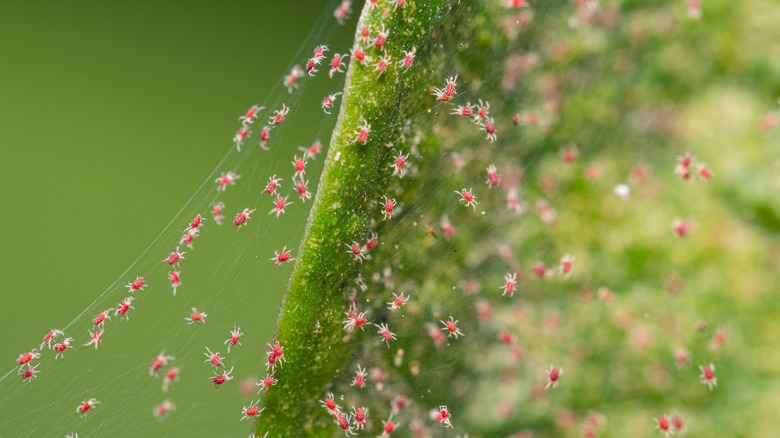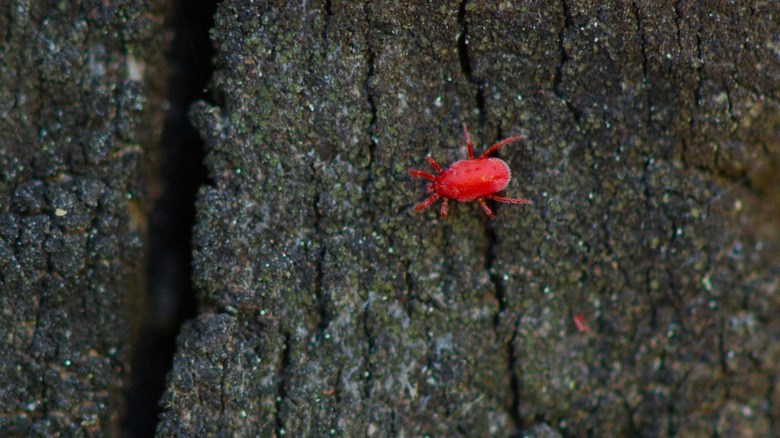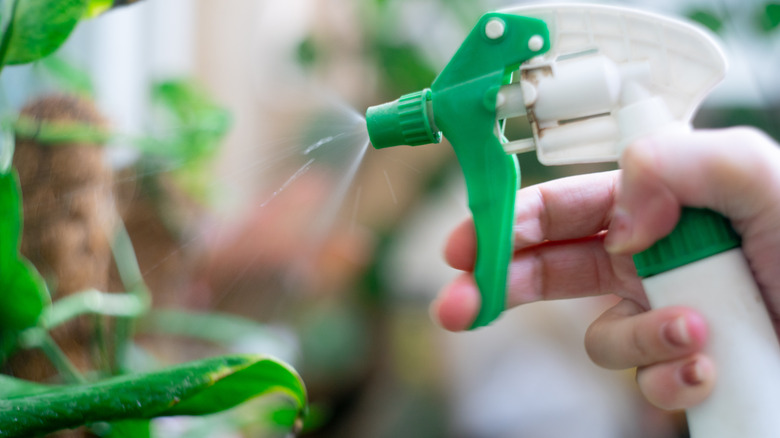Spider Mites Vs Clover Mites: Which Tiny Red Pest Is Lurking In Your Home & Garden?
Whether you're already a plant-lover with an indoor or outdoor jungle or have been looking for the easiest houseplants to grow as a beginner, you've likely heard of the dreaded spider mites. There are several pests your plant babies may be at risk of getting, though we usually assume spider mites are the culprit when webbing is present. Spider mites are incredibly tiny, making them nearly impossible to see with the naked eye. If leaves are becoming yellow, damaged, or start falling off and are accompanied by webs underneath the leaves, you may be certain you're dealing with spider mites. However, there's another similar-looking bug that could be at fault for hurting your houseplants: clover mites.
Any type of mite crawling around on your plants is a sign of trouble. Both spider mites and clover mites feed on sap, which can cause damage to the leaves. Even worse, it's possible for them to spread plant viruses, which can lead to the death of both indoor and outdoor species. Because they're both the same size and color, how do you differentiate the two? And more importantly, how do you get rid of them? Luckily, there are several ways to eradicate spider mites or banish clover mites for good.
Clover mites look like spider mites but transfer a distinctive pigment
Like spider mites, clover mites are less than a millimeter and can be hard to see with the naked eye. However, you may be able to see their pin-sized dots scattered across the leaves of your indoor or outdoor plants. As part of the arachnid family, they have eight legs, with the front pair being significantly longer, resembling antennae. You'll only ever see female clover mites as they lay eggs via parthenogenesis and don't require a man for mating. Because they cannot mate in indoor conditions, you won't need to worry too much if you find them on your houseplants; they'll likely die within a few days. As their name suggests, their favorite food is clover, though there are quite a few plant species they enjoy in your yard, specifically lawns with nutrient-rich soil.
If you're unsure if you're dealing with clover mites, all you need to do is squish a few. Unlike spider mites, clover mites will leave behind a red stain. Although they can be a nuisance, they won't bite you or transmit diseases. They may suck the sap out of your garden plants when outdoors, but this typically doesn't do too much harm, though it will leave behind a silvery streak on the leaves. That said, although they can't get humans sick, they can transfer one plant disease to another, so you still don't want them hanging out in your yard.
How to get rid of spider mites and clover mites
Although spider mites tend to do more damage to plants, it's a good idea to wipe out any infestation, no matter which bug you're dealing with. One of the best ways to get rid of spider mites or clover mites is to use rubbing alcohol. First, isolate any indoor plants you think may have spider or clover mites on them to prevent the others from getting affected. It's best to test the leaves to make sure pure alcohol won't harm them. Otherwise, you may need to dilute it. Use a cotton pad dipped in either pure rubbing alcohol or alcohol diluted in water, and rub the affected areas. You can also spray the entire plant, give it a couple of hours to kill all the pests, and then rinse off the dead bugs with water.
Luckily, clover mites indoors aren't the end of the world, as they'll get dehydrated and die off relatively quickly. However, if you have a large infestation that's affecting indoor and outdoor plants, you may need to turn to insecticides to take care of them. Make sure you're using the appropriate product, and only use outdoor insecticides in your yard and garden, not inside your home.



